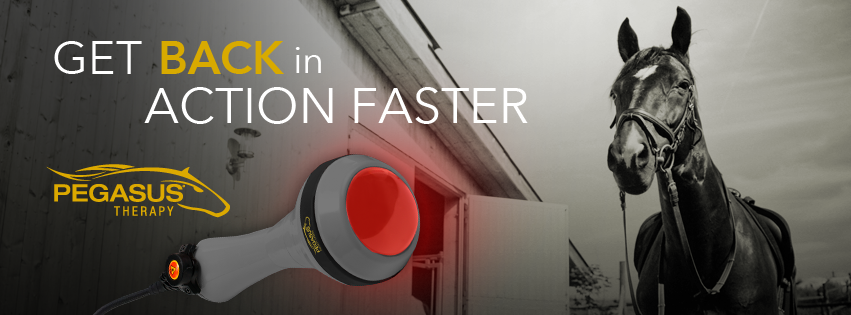How Laser Treatment in Equine Therapy Is Transforming Veterinary Care for Steeds
Laser treatment has actually arised as a transformative approach in equine vet treatment, offering a non-invasive remedy that accelerates healing and enhances overall wellness. The portability and adaptability of laser therapy tools further emphasize their expanding indispensability amongst vets.
Understanding Laser Treatment

The technology behind laser therapy is based in the concept of photochemistry, where photons are soaked up by chromophores within cells, leading to enhanced ATP production and modulation of reactive oxygen types (Equine Therapy). This, in turn, promotes cellular proliferation, decreases inflammation, and speeds up healing. Veterinary experts utilize different kinds of lasers, consisting of low-level lasers (LLLT) and high-power Course IV lasers, relying on the specific therapeutic objectives and the nature of the equine condition being treated
Various laser wavelengths and power setups are meticulously picked to target numerous tissue depths and accomplish preferred medical outcomes. Safety protocols are extremely important, as inappropriate use can bring about thermal damages or suboptimal restorative effects. Thus, a comprehensive understanding of laser treatment's devices and applications is critical for its effective implementation in equine veterinary practice.
Advantages for Equine Health
The myriad advantages of laser therapy for equine wellness include boosted healing, discomfort decrease, and improved flexibility. This sophisticated treatment method leverages details wavelengths of light to permeate tissues, stimulating cellular feature and promoting fast cells repair service. The non-invasive nature of laser therapy guarantees marginal stress and pain for the steed, assisting in a smoother recovery process.
Enhanced healing is just one of the foremost advantages, as laser treatment increases cellular regeneration and collagen synthesis. This causes faster healing times from injuries and surgeries. Pain decrease is attained through the anti-inflammatory results of laser therapy, which decreases swelling and minimizes the manufacturing of pain-inducing chemicals. Because of this, horses experience considerable remedy for persistent and sharp pain problems.
By minimizing swelling and pain, and enhancing tissue fixing, laser treatment assists in bring back joint feature and muscle versatility. Therefore, laser treatment stands as a transformative tool in modern equine vet treatment.
Usual Problems Treated
Laser therapy has actually emerged as a versatile therapy alternative for a range of common equine conditions. Amongst these, musculoskeletal injuries are particularly amenable to laser treatment. Equine Therapy. Soft tissue injuries, such as tendonitis and ligament pressures, take advantage of the anti-inflammatory and analgesic effects of laser therapies, which speed up healing and minimize pain. Additionally, laser therapy works for problems like osteoarthritis, where it aids alleviate joint inflammation and advertise tissue repair.
Wound monitoring is one more location where laser therapy has actually shown considerable promise. Persistent injuries or slow-healing ulcers can be specifically challenging in steeds, but laser therapy boosts cellular regrowth and boosts blood circulation, hence quickening the healing procedure. Additionally, laser therapies have actually been effectively employed in handling unguis conditions such as laminitis and abscesses, relieving pain and promoting much faster recuperation.

Innovation Behind Laser Therapy
Beyond the myriad problems treatable with laser treatment, the modern technology itself qualities more detailed examination. At the heart of laser treatment is the usage of certain wavelengths of light to permeate tissues and elicit biological responses. These wavelengths, typically ranging from 600 to 1000 nanometers, are precisely absorbed by chromophores in the skin, muscular tissue, and various other cells, initiating a waterfall of mobile occasions.
Laser tools utilized in veterinary medicine frequently use low-level laser therapy (LLLT) i loved this or cold laser treatment. Unlike high-powered surgical lasers, these devices run at lower energy degrees, enhancing therapeutic advantages while lessening thermal damage. The power from the laser light promotes adenosine triphosphate (ATP) production, boosts cellular his explanation metabolism, and accelerates cells repair work procedures.

Success Stories and Instance Researches

Showcasing the concrete benefits of laser therapy, many success tales and instance researches brighten its transformative influence on her latest blog equine health. One such instance includes a pureblooded racehorse struggling with chronic tendonitis. Standard therapies produced very little renovation, but after integrating laser therapy into the regimen, the steed showed considerable reductions in swelling and discomfort within weeks, ultimately going back to affordable racing.
One more engaging example features a dressage horse diagnosed with extreme neck and back pain, restricting its performance. A vet group used low-level laser therapy (LLLT) to target the swollen locations, resulting in significant improvement in flexibility and a notable decrease in discomfort. Over several sessions, the equine reclaimed its peak form, showcasing the efficacy of laser treatment in addressing musculoskeletal concerns.
In addition, a research study carried out at a leading equine center analyzed 50 horses with numerous soft tissue injuries treated with laser therapy. The outcomes were striking: 85% of the equines showed sped up healing times and boosted wheelchair. These cases emphasize the adaptability and effectiveness of laser treatment in equine medication, using a non-invasive, scientifically-backed method to boosting healing and efficiency in equines.
Conclusion
Laser treatment is revolutionizing equine vet treatment by offering a non-invasive treatment that increases healing, reduces swelling, and minimizes pain. With its effectiveness in dealing with a variety of problems, from musculoskeletal injuries to chronic ailments like osteoarthritis, this innovation considerably enhances equine health and wellness and flexibility. The portability and adaptability of laser treatment even more emphasize its transformative impact on vet techniques, solidifying its function as an essential device in contemporary equine medical care.